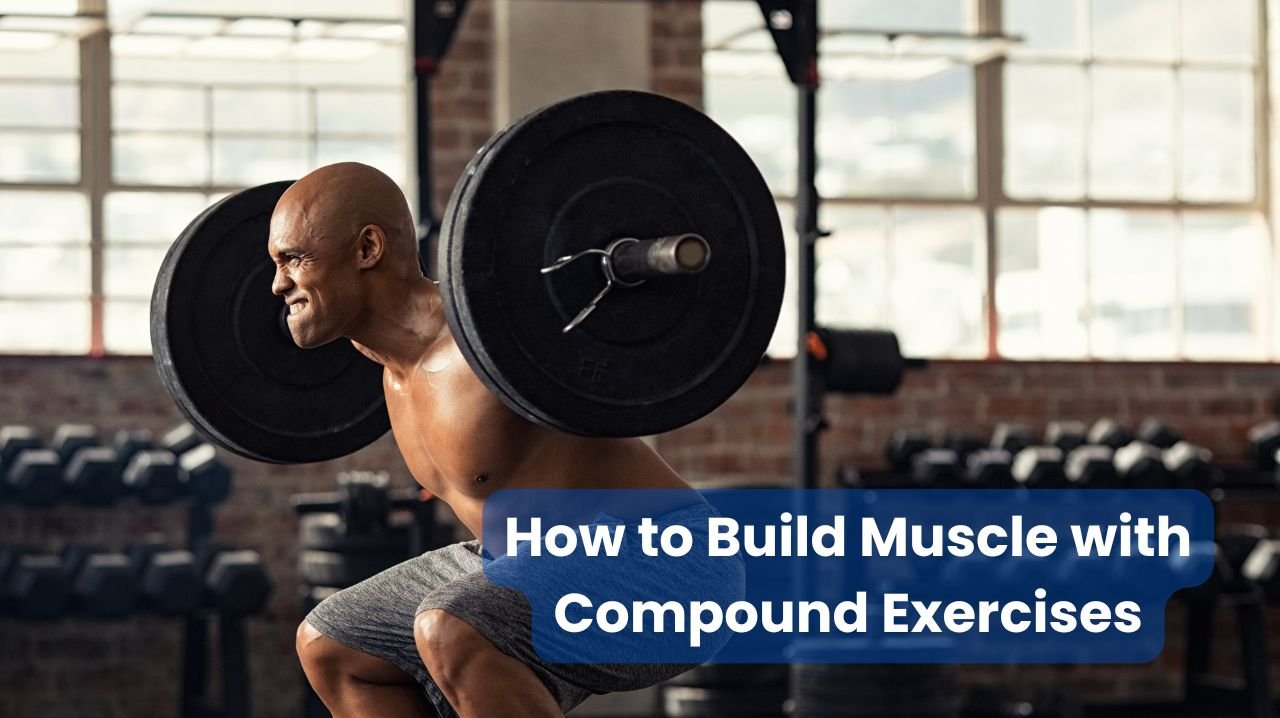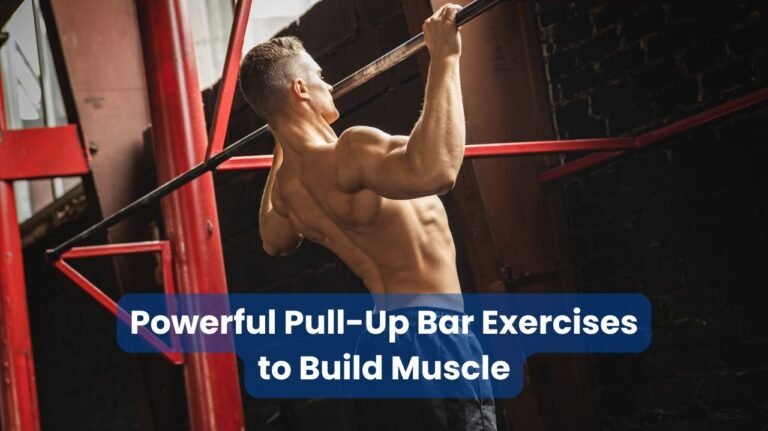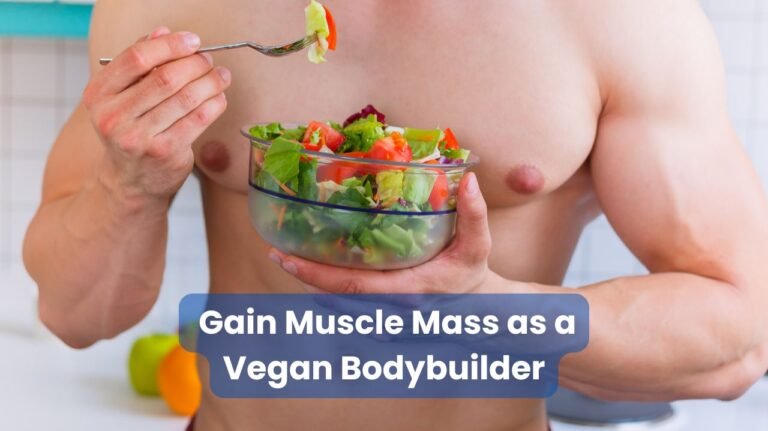How to Build Muscle with Compound Exercises: Top Moves
For fitness enthusiasts looking to build muscle effectively, compound exercises are the way to go. These multi-joint movements engage multiple muscle groups simultaneously, leading to greater muscle growth and overall strength gains.
This article will explore the benefits of compound exercises and highlight some of the best moves for building muscle mass.
👉 Pack On Muscle Mass and Get Bigger and Stronger
👉 Burn Fat and Get Seriously Ripped
👉 Get Explosive Strength and Maximum Stamina
👉 Become A Gym Beast With Legal SARMs Alternatives
Understanding Compound Exercises
Compound exercises are movements that involve multiple joints and muscle groups working together. Unlike isolation exercises that target a single muscle, compound exercises recruit several muscles at once, making them highly efficient for building overall strength and muscle mass.
Some key benefits of compound exercises include:
- Increased muscle activation
- Higher calorie burn
- Improved functional strength
- Enhanced coordination and balance
- Time-efficient workouts
- Greater hormonal response
By incorporating compound exercises into a workout routine, fitness enthusiasts can maximize their muscle-building potential and achieve their goals more quickly.
The Science Behind Muscle Growth
To understand why compound exercises are so effective for building muscle, it’s essential to grasp the basics of muscle hypertrophy. Muscle growth occurs when muscle fibers experience micro-tears during intense exercise. As the body repairs these tears, the muscle fibers become larger and stronger.
Compound exercises are particularly effective for muscle growth because they:
- Activate more muscle fibers
- Stimulate the release of anabolic hormones like testosterone and growth hormone
- Allow for heavier weights to be lifted, creating greater mechanical tension
- Increase metabolic stress, which promotes muscle growth
By leveraging these physiological responses, compound exercises provide a powerful stimulus for muscle growth.
Top Compound Exercises for Building Muscle
Now that we understand the importance of compound exercises, let’s explore some of the most effective moves for building muscle mass.
1. Squats
Often called the king of exercises, squats are a fundamental compound movement that targets multiple lower body muscles, including the quadriceps, hamstrings, glutes, and calves. They also engage the core and lower back muscles for stabilization.
Key points for proper squat form:
- Stand with feet shoulder-width apart
- Keep the chest up and core engaged
- Lower the body as if sitting back into a chair
- Keep knees in line with toes
- Descend until thighs are parallel to the ground (or as low as flexibility allows)
- Drive through the heels to return to the starting position
2. Deadlifts
Deadlifts are another powerhouse exercise that targets the entire posterior chain, including the back, glutes, hamstrings, and core. This move is excellent for building overall strength and muscle mass.
Tips for proper deadlift technique:
- Stand with feet hip-width apart
- Bend at the hips and knees to grasp the barbell
- Keep the back straight and chest up
- Lift the bar by extending the hips and knees
- Keep the bar close to the body throughout the movement
- Lower the bar back to the ground with control
3. Bench Press
The bench press is a classic upper body compound exercise that primarily targets the chest, shoulders, and triceps. It’s an essential move for building upper body strength and muscle mass.
Guidelines for proper bench press form:
- Lie on a flat bench with feet firmly on the ground
- Grip the bar slightly wider than shoulder-width
- Lower the bar to the chest, keeping elbows at a 45-degree angle
- Press the bar back up to the starting position
- Maintain control throughout the movement
4. Pull-ups
Pull-ups are an excellent bodyweight compound exercise that targets the back, biceps, and core. They’re challenging but highly effective for building upper body strength and muscle.
Key points for proper pull-up technique:
- Grasp the bar with hands slightly wider than shoulder-width
- Hang with arms fully extended
- Pull the body up until the chin clears the bar
- Lower back down with control
- Avoid swinging or using momentum
5. Overhead Press
The overhead press, also known as the military press, is a compound exercise that targets the shoulders, triceps, and upper chest. It’s excellent for building strong, well-defined shoulders.
Tips for proper overhead press form:
- Stand with feet shoulder-width apart
- Grip the bar at shoulder level with palms facing forward
- Press the bar overhead until arms are fully extended
- Lower the bar back to shoulder level with control
- Keep the core engaged throughout the movement
Creating a Muscle-Building Workout Plan
To maximize muscle growth, it’s important to incorporate these compound exercises into a well-structured workout plan. Here’s a sample weekly routine that focuses on compound movements:
| Day | Workout |
|---|---|
| Monday | Lower Body: Squats, Deadlifts, Lunges |
| Tuesday | Upper Body: Bench Press, Pull-ups, Overhead Press |
| Wednesday | Rest or Light Cardio |
| Thursday | Lower Body: Front Squats, Romanian Deadlifts, Step-ups |
| Friday | Upper Body: Incline Bench Press, Rows, Dips |
| Saturday | Full Body: Squats, Bench Press, Pull-ups |
| Sunday | Rest |
Progressive Overload: The Key to Continuous Muscle Growth
To continue building muscle over time, it’s crucial to implement progressive overload. This principle involves gradually increasing the demands placed on the muscles to stimulate further growth and adaptation.
Ways to implement progressive overload:
- Increase the weight lifted
- Perform more repetitions
- Add more sets
- Decrease rest time between sets
- Improve exercise form and range of motion
By consistently challenging the muscles with progressive overload, fitness enthusiasts can ensure continued muscle growth and strength gains.
Nutrition for Muscle Growth
While compound exercises provide the stimulus for muscle growth, proper nutrition is essential for fueling workouts and supporting muscle recovery and growth. Here are some key nutritional considerations for building muscle:
Protein Intake
Protein is the building block of muscle tissue. To support muscle growth, aim for a protein intake of 1.6-2.2 grams per kilogram of body weight per day. Good sources of protein include:
- Lean meats (chicken, turkey, lean beef)
- Fish (salmon, tuna, tilapia)
- Eggs
- Dairy products (Greek yogurt, cottage cheese)
- Plant-based sources (lentils, beans, tofu)
Carbohydrates for Energy
Carbohydrates provide the energy needed for intense workouts and help replenish glycogen stores. Focus on complex carbohydrates such as:
- Whole grains (brown rice, quinoa, oats)
- Sweet potatoes
- Fruits
- Vegetables
Healthy Fats
Healthy fats play a crucial role in hormone production and overall health. Include sources of healthy fats like:
- Avocados
- Nuts and seeds
- Olive oil
- Fatty fish
Hydration
Proper hydration is essential for muscle function and recovery. Aim to drink at least 8-10 glasses of water per day, and more during intense workouts.
Recovery and Rest: Essential for Muscle Growth
While intense workouts provide the stimulus for muscle growth, adequate recovery and rest are crucial for allowing the muscles to repair and grow stronger. Here are some key aspects of recovery to consider:
Sleep
Quality sleep is essential for muscle recovery and growth. Aim for 7-9 hours of sleep per night to support optimal muscle-building conditions.
Rest Days
Incorporate rest days into your workout routine to allow muscles time to recover and prevent overtraining. Active recovery activities like light stretching or walking can be beneficial on rest days.
Proper Warm-up and Cool-down
Always include a proper warm-up before your workouts to prepare your muscles and joints for exercise. Similarly, cool down with light stretching after your workouts to promote flexibility and reduce muscle soreness.
👉 Boost in Focus and Energy to Help Increase Pumps and Performance
👉 Increase Gains, Promote Muscle Growth and Boost Energy
👉 Powerful Muscle Growth, Increased Blood Flow, and Enhanced Pumps
👉 Bulk-Up, Increase Gains, And Improve Recovery
Conclusion
Building muscle with compound exercises is an effective and efficient approach to achieving fitness goals. By focusing on movements like squats, deadlifts, bench presses, pull-ups, and overhead presses, fitness enthusiasts can maximize muscle activation and stimulate significant muscle growth.
Remember to combine these exercises with proper nutrition, progressive overload, and adequate rest for optimal results. With consistency and dedication, anyone can build impressive muscle mass and strength using compound exercises as the foundation of their workout routine.
By incorporating these principles and exercises into a well-structured fitness plan, individuals can transform their physiques and achieve their muscle-building goals. Whether you’re a beginner or an experienced lifter, the power of compound exercises can help you take your muscle-building journey to the next level.







